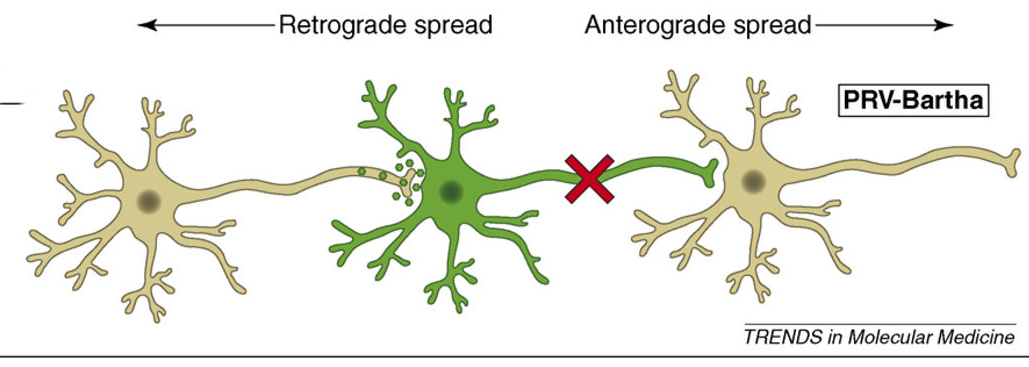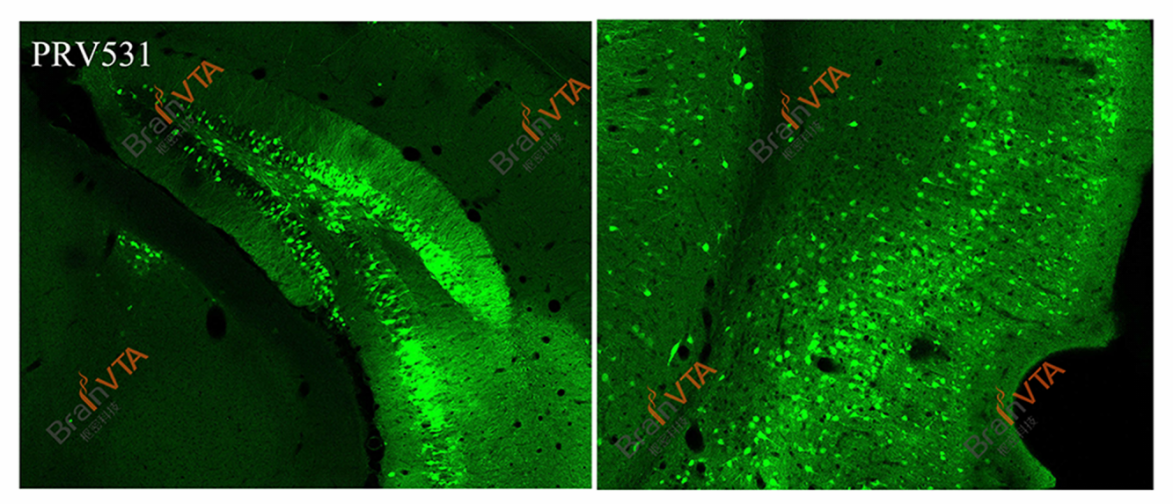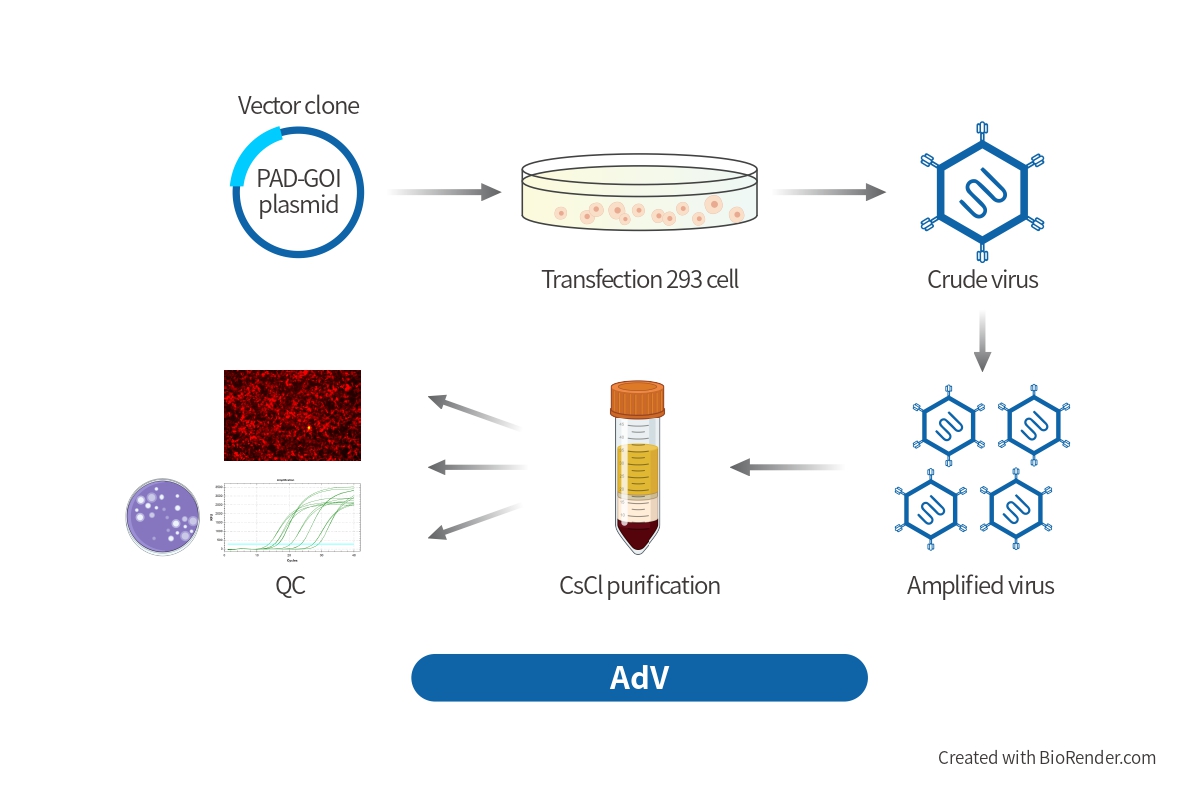 Fig1. Schematic representation of PRV Bartha strain retrograde transsynaptic transmission (Ekstrand MI et al.Trends Mol Med.2008).
Fig1. Schematic representation of PRV Bartha strain retrograde transsynaptic transmission (Ekstrand MI et al.Trends Mol Med.2008).
After years of research, BrainVTA has established a stable production platform, and could offer pseudorabies virus(PRV) services to promote PRV-based neuronal tracing studies.
Applications
● Multisynaptic tracing from the peripheral to brain center, or the higher to the lower brain region.
● Tracking peripheral organs' connections to the central nervous system.
● Tracking the neural networks in disease or injury model.
● Changes in neural networks during neural development.

Fig2. Mice were infected PRV for 48h
Popular PRV particles
| Cat# | Name | Description | Price |
|---|---|---|---|
| P03001 | PRV-CAG-EGFP | Retrograde, multisynaptic | Inquiry |
| P03002 | PRV-CAG-mRFP | Retrograde, multisynaptic | Inquiry |
| P04001 | PRV-△TK-Ubc-DsRed | Delete TK, Retrograde | Inquiry |
| P04002 | PRV-CMV-ΔTK-LSL-EGFP-2A-TK | Retrograde, multisynaptic, Cre dependent | Inquiry |
Successful case
-
Wangxiaojun. Plastic embedding immunolabeled large volume samples for three-dimensional high-resolution imaging. doi: 10.1364/BOE.8.003583.
-
Zhijian Zhang, Hongruo Zhang, Pengjie Wen, Xutao Zhu, Li Wang, Qing Liu, Jie Wang, Xiaobin He, Huadong Wang and Fuqiang Xu. Whole-Brain Mapping of the Inputs and Outputs of the Medial Part of the Olfactory Tubercle. https://doi.org/10.3389/fncir.2017.00052.
-
Hao-Long Zeng, Fei-Long Yu, Zhijian Zhang, Qing Yang, Sen Jin, Xiaobin He. Quantitative proteomics study of host response to virulent and attenuated pseudorabies virus infection in mouse brain. https://doi.org/10.1016/j.bbapap.2017.11.010.
-
Haixia Liu, Xutao Zhu, Yun Ling, Xiaobin He, Lei Pei, Zhidan Zhang, Fang Yang, Fuqiang Xu. Corticosterone signaling and a lateral habenula-ventral tegmental area circuit modulate compulsive self-injurious behavior in a rat model. https://doi.org/10.1167/iovs.18-24308.







